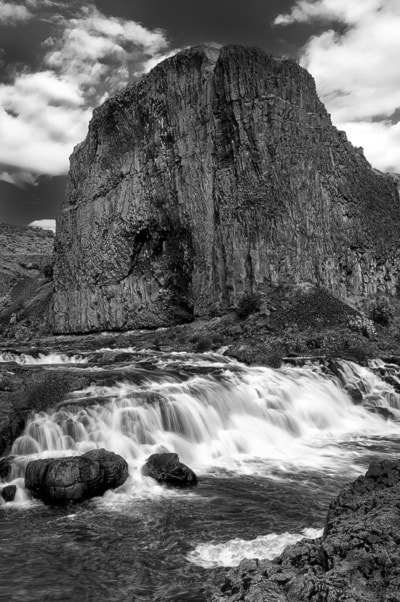On a business trip to Canada in 1840 an Englishman named Pattinson made the first known scenic photograph in this country. A student of an early form of photography perfected by Louis Jacques Mande Daguerre, Pattinson set up his camera at Niagara Falls, and produced the now cherished historical Daguerreotype photograph.
That Daguerreotype would have taken more than 20 minutes for the scene to expose on a silver-coated plate inside his camera. Later the photographer would surround the plate with warm mercury fumes that would slowly make the image visible.
Those Canadian scenic landscape photographers reading this are part of a long history of photographing this country since that moment.
Last week a photographer stopped by my shop looking for a scenic lens. After looking around a bit she asked, “What is the best lens for scenic photography?”
That is a question that is all too familiar, especially from those new to the medium in the process of spending their hard earned money on equipment.
I suggested she take a look at zoom lenses that will give her the most versatility without having to spend the big bucks. There are lenses, for example, like the 18-70mm, 18-200mm, or even 70-300mm are reasonably light and give lots of choices of perspective. However, instead of just recommending a particular lens for scenic photography I wanted her to begin thinking about perspective.
A wide-angle lens has a curved front surface allowing for a wider view. Distances between the foreground and background subjects will be extreme, and the subject closer to the lens will be larger. When using a 18mm focal length for a portrait, the person’s nose will be big and the ears will be small. A 200mm lens will give a more tightly compressed view and distances between the foreground and background subjects will not look as extreme as the wider 18mm focal length. 200mm would be a better lens for photographing that person’s face because of the compressed perspective. An example we commonly see is when we watch a baseball game, and the pitcher looks very close to the catcher, which is caused by the compression of the long focal length lens.
Here is a more practical example. I am photographing a waterfall with cliffs in the background, and with wet rocks in the foreground. If I use a long focal length like the 200mm all the elements will be compressed in the final image with no subject gaining significance over another. However, if I fitted my camera with a 18mm lens the foreground subjects will be larger and more significant, creating distance to the background. Both would be good renditions, just different.
I believe the best lens depends on the perspective that the photographer wants to view in the final image. One must think about the perspective front to back, how much of the scenic is important as in a wide, or narrow, aspect. It comes down to the personal vision and what he or she wants to say about the landscape being captured.
Famous scenic photographer Ansel Adams advised, “Problem solve for the final photograph”.
Like Adams, photographers should think about how the final photograph will be used and how to accomplish that. If one thinks of a final photograph as a series of problems to be solved there will be a smooth transition from initial idea to final print.
There is no one lens that can be termed a “scenic or landscape” lens. Any lens might be used as long as it meets the photographer’s vision. That vision might be to include a wide vista with a wide-angle lens or on the other hand, a tighter cropped image created with a telephoto lens might be visually more powerful. The choice of lens for scenics comes down to what the photographer wants the viewer to feel and see.
These are my thoughts for this week. Contact me at www.enmanscamera.com or emcam@telus.net. Stop by Enman’s Camera at 423 Tranquille Road in Kamloops.
I sell an interesting selection of used photographic equipment.
And if you want an experienced photographer please call me at 250-371-3069.
